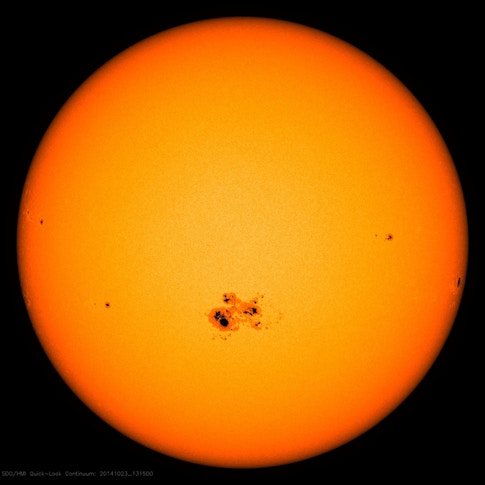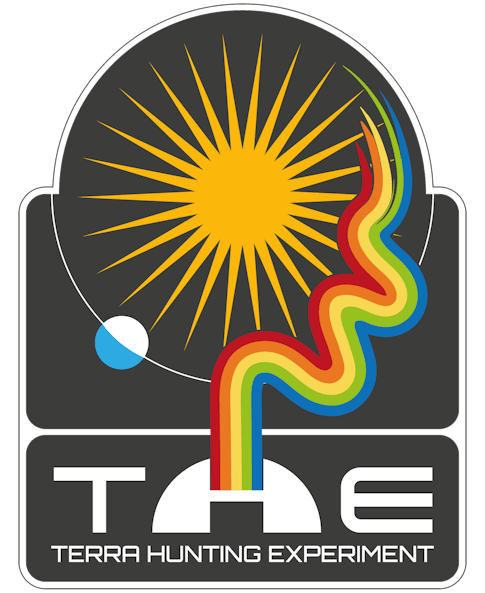The Planet Huntress

Twenty years ago, only a handful of planets orbiting other stars had been discovered. Today, scientists have found thousands of these exoplanets. With this multitude of other worlds to study, some researchers are taking a closer look to see if any might be capable of hosting life. Other scientists are trying to find Earthlike planets.
At the Flatiron Institute, astronomer Megan Bedell is one of those scientists leading the search for the next Earth. She uses a technique called radial velocity spectroscopy, which watches for tiny shifts in a star’s light that can reveal how the star is being ever so slightly pushed around by an unseen planet. As she trains her eye on potential worlds, she’s also learning a lot about stars and how they play a role in sculpting planets’ environments.
Bedell earned a bachelor’s degree in astronomy from Haverford College and a doctorate in astronomy from the University of Chicago. Prior to becoming an associate research scientist at the Flatiron Institute’s Center for Computational Astrophysics (CCA), Bedell was a Flatiron research fellow.
What can the study of stars reveal about planets?
Stars and planets are connected on many levels. First, a star is the most important and dominant force in a planetary system. Planets, even giant ones like Jupiter and Saturn, are actually minuscule compared to the stars they orbit, and are therefore hugely affected by their host star. If you want to understand what’s happening on a planet — like what molecules make up its atmosphere or what the physical conditions are on the surface — you have to understand what its environment is like. And that environment is essentially constructed from the light and particles its host star emits into space.
Stars are also important because they’re key to how we find planets. The vast majority of exoplanets we know about today have been discovered through indirect methods — where we’re really not seeing the planet; we’re seeing the effects that the planet has on the host star. If you don’t precisely know the mass or size of the star, then it makes it a lot harder to know if there’s a planet there, much less what its properties might be. Know thy star, know thy planet, as we say.
How are you working to understand stars and planets?
Most of my research is taking and analyzing observations of sunlike stars to hopefully find Earth analogs. Finding another planet like Earth is hard, because you need highly sensitive instruments to find small planets and planets that are far away from their host stars. We’re just now on the cusp of having the technology to find Earth-size planets on Earthlike orbits.
Most of the observations that I work with are from radial velocity surveys where we are looking at sunlike stars. We have to repeatedly visit the same stars many times over years to see the small changes that can reveal small planets. Because the planetary signal is so small, we inadvertently end up with a rich dataset for understanding stars. This enables us to use the same data to both study the stars and to look for planets.
These radial velocity datasets also end up being really big; for some experiments we’re gathering thousands of observations per star. We have to use innovative data analysis techniques to find the tiny signal of a planet in this huge mess of data. Typically scientists use physical models to help analyze this type of data, but these can miss important things when the physical model isn’t an exact match to the star you’re looking at. In my case, we don’t have the computational tools right now to physically model the short-term dynamics of a star’s atmosphere at the scale of the observations, so instead I use what are called data-driven models.

As opposed to a physical model which starts from a theoretical understanding of how the system works, a data-driven approach uses many observations of a system to build up a model of the system’s behavior. Some examples of data-driven models are modern machine learning algorithms that predict stock prices or make advertising choices based on lots of information about the history of the stock market or on sales data. Data-driven methods such as these are critical, because they give us a path forward even in areas where the physical models might break down.
And what kind of things are you learning about these stars, in that process?
We’re learning a lot about stellar activity. For example, the sun has dark and bright features arising on its surface due to magnetic activity underneath. These are called sunspots, and we’re learning how frequent they are on other stars. This helps us understand the magnetic fields of those stars, and how they change on a daily basis.
Is our sun fairly typical for a star of its size and type?
So far it seems like other sunlike stars are fairly similar to the sun it terms of their activity levels. But these stars are far away, and it’s hard to measure what they’re doing on small scales — scales that nevertheless could affect planet habitability. As technology advances, we’re trying to push those observations further and see just how similar these stars are to the sun, and as a result, just how likely they might be to have habitable planets.

What are you most excited about for the future of the field?
A project that I’m particularly excited about is called the Terra Hunting Experiment, which is funded in part by the Simons Foundation. We’re planning to put a spectrograph, an instrument to measure specific wavelengths of light, onto a telescope at La Palma in the Canary Islands. We plan to use it basically every night for the next 10 years to observe a small set of sunlike stars. This should allow us to reach the sensitivities needed to find an Earth analog. I’m really interested to see that dataset 10 years from now. Will we have found an Earthlike planet? I hope we will have, but I’m absolutely certain that we will have learned really interesting things about stars and stellar physics, and so I’m excited for that as well.
This Q&A is part of Flatiron Scientist Spotlight, a series in which the institute’s early-career researchers share their latest work and contributions to their respective fields.